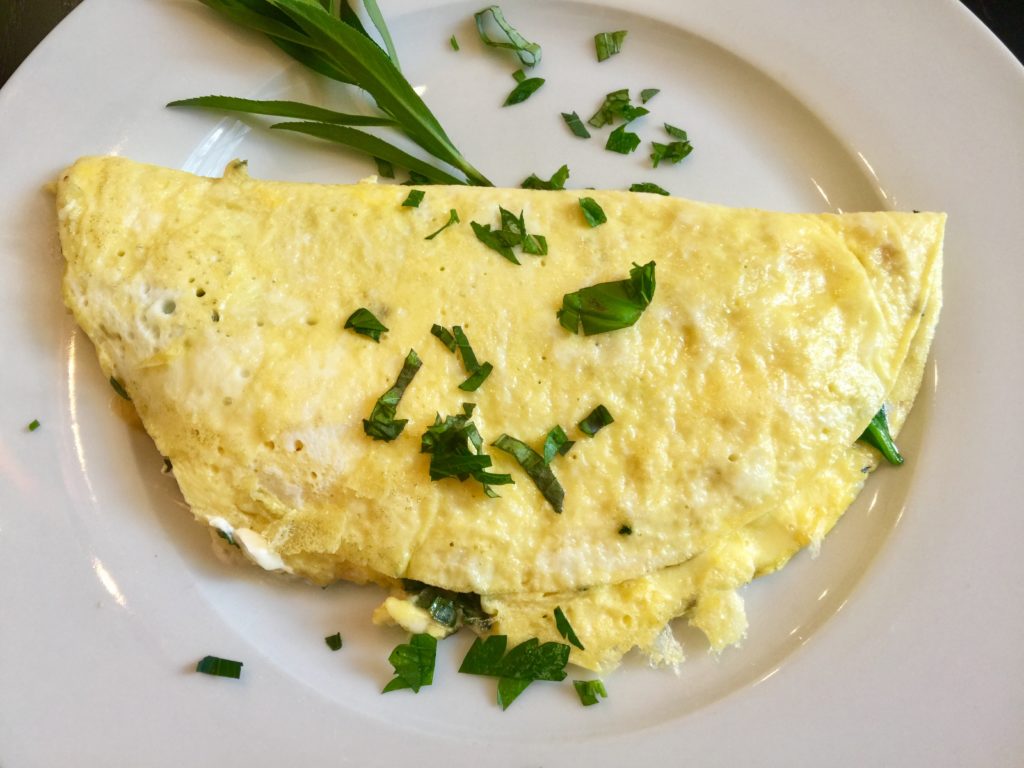Years ago, I had a boyfriend who made a distinct vegetable soup that I did not like at all. He had prepared it early in our relationship—in that new-love period when everything is perfect, even when it’s not. The bowl was placed before me, and I welcomed the first spoonful, only to be taken aback by an unexpected base of thick tomato juice and a whole lot of one overpowering herb. It was chock-full of dried tarragon, and by the end of my bowl, I wasn’t sure I could ingest it again. Ever.
The relationship eventually fizzled, but my dislike of tarragon marched on. While used in classic French cooking (think béarnaise sauce and the herb quartet, fines herbs), it’s not as common among Southern cooks as basil, rosemary or other A-list herbs. But when I did detect its anise flavor, I’d pull away in horror. It just grossed me out the way foods can when you’ve overindulged.
Life went on, I got married (to a different guy), had kids and cooked nonstop (never with tarragon). A few years back, we moved into a house with a picket fence-lined kitchen garden, and my husband helped me fill it with vegetables and herbs. One day, he plunked down a tarragon plant and said, “Let’s see how this one does.”
|
|
|
It did well. Really well. It’s probably grown better than almost anything we’ve ever planted, bouncing back after the last real frost around here and sprouting new growth like crazy. For the last few years, we’ve been swimming in tarragon. My practical side took over, and I started slowly incorporating it into my cooking.
First, there was roast chicken. Then, there were seafood crepes and shrimp pasta. There were French omelets, herb butters and stuffed pork chops. Tarragon made them all sing. Its airy notes lifted the texture of so many different foods, refusing to let them feel heavy while also applying its distinct note of anise. I sincerely began to enjoy it. Each time I’d walk by and brush the tarragon plant, or when the wind blew a certain direction, the aroma made me want to go snip a bunch of leaves and get cooking.
One of the easiest and most traditional ways to incorporate fresh tarragon is in a French omelet. A real French omelet is made with fines herbes, a combination of tarragon, chervil, chives and parsley, but it’s perfectly fine to modify it.
Below is an easy formula that pairs tarragon with punchy goat cheese and fresh, wilted spinach. Use less than a tablespoon if you want to ease into tarragon. The key, as I’ve learned, is moderation.

Tarragon Spinach Omelet
Makes one generous or two small servings
|
|
|
2 tablespoons olive oil or butter
1 cup fresh spinach, chopped
3 eggs
Splash of milk or water
2 tablespoons goat cheese
1 tablespoon chopped fresh tarragon (use less if you like)
1 teaspoon chopped parsley or chives
In a medium non-stick skillet over medium-high heat, add one tablespoon of the olive oil. Add the spinach and sauté until just wilted. Remove the spinach from the pan and set aside. Return the pan to the heat, turn the flame to low and add the remaining tablespoon of oil. Beat the eggs gently with splash of milk or water. Pour into the pan and let sit for about 2 minutes until the eggs begin to become just firm on the bottom. Using a rubber spatula, gently lift the edges of the omelet and tilt the pan, allowing excess liquid to pour underneath and cook. Add the spinach to the center of the omelet, along with the goat cheese and tarragon. Fold the omelet over once to form a half-moon shape, and cook for another minute. Do not brown. Transfer to a plate, and top with the remaining herbs.
Maggie Heyn Richardson is a regular 225 contributor. Reach her at hungryforlouisiana.com.





